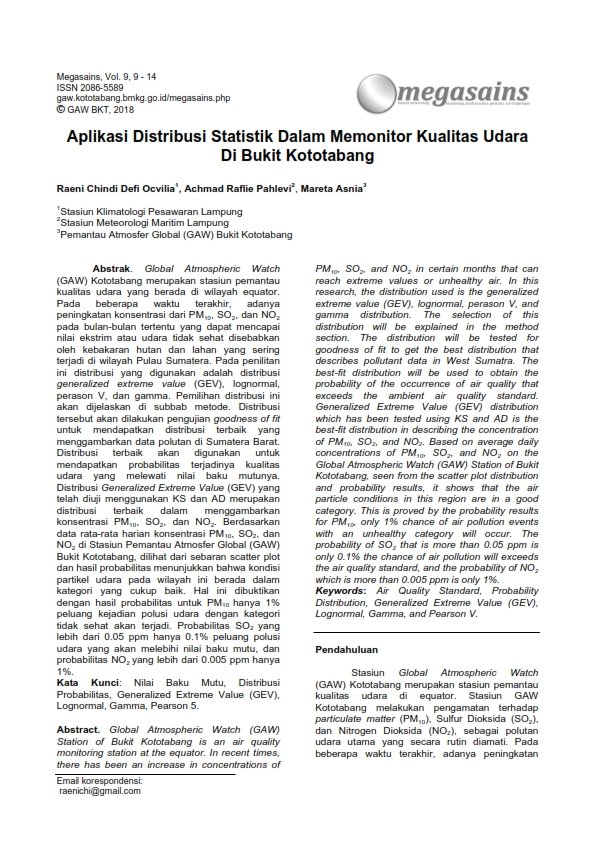Application of Statistical Distribution in Monitoring Air Quality On Kototabang Hill
Main Article Content
Abstract
Global Atmospheric Watch (GAW) Station of Bukit Kototabang is an air quality monitoring station at the equator. In recent times, there has been an increase in concentrations of PM10, SO2, and NO2 in certain months that can reach extreme values or unhealthy air. In this research, the distribution used is the generalized extreme value (GEV), lognormal, perason V, and gamma distribution. The selection of this distribution will be explained in the method section. The distribution will be tested for goodness of fit to get the best distribution that describes pollutant data in West Sumatra. The best-fit distribution will be used to obtain the probability of the occurrence of air quality that exceeds the ambient air quality standard. Generalized Extreme Value (GEV) distribution which has been tested using KS and AD is the best-fit distribution in describing the concentration of PM10, SO2, and NO2. Based on average daily concentrations of PM10, SO2, and NO2 on the Global Atmospheric Watch (GAW) Station of Bukit Kototabang, seen from the scatter plot distribution and probability results, it shows that the air particle conditions in this region are in a good category. This is proved by the probability results for PM10, only 1% chance of air pollution events with an unhealthy category will occur. The probability of SO2 that is more than 0.05 ppm is only 0.1% the chance of air pollution will exceeds the air quality standard, and the probability of NO2 which is more than 0.005 ppm is only 1%.
Article Details

This work is licensed under a Creative Commons Attribution-NonCommercial 4.0 International License.
The author is willing to retain the copyright and grant journal rights to the first publication with works that are simultaneously under license the Creative Commons Attribution-NonCommercial-NoDerivatives 4.0 International. It allowing the others to share the work with recognition of the author's work and the initial publication in this journal.
Authors can enter into separate additional contractual arrangements for the non-exclusive distribution of published versions of journal works (for example, posting them to institutional repositories or publishing them in a book), with recognition of the initial publications in this journal.
Authors are permitted and encouraged to send their work online (for example, in their institutional repositories or websites) before and during the submission process because it can lead to productive exchanges, as well as previous and larger citations of published works.

